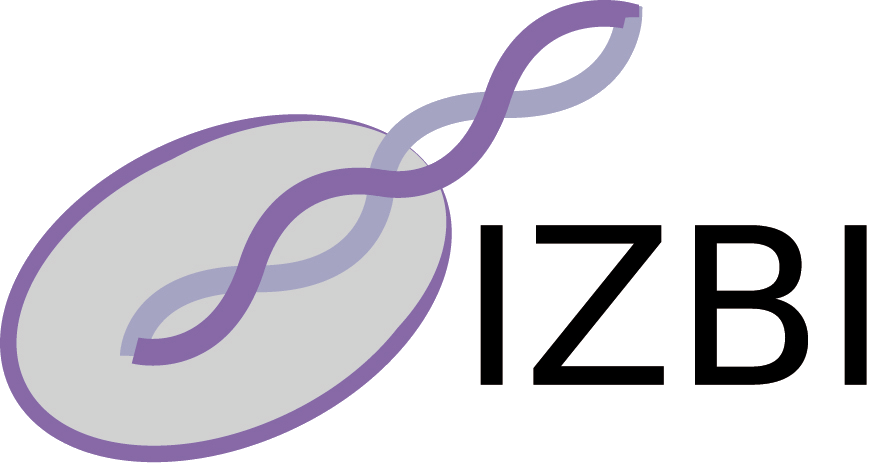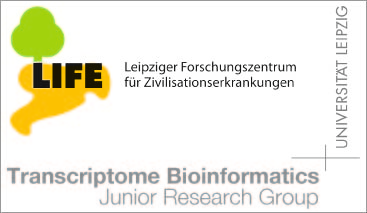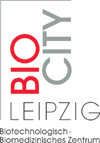Graphen und biologische Netze (Modul 10-202-2205)
| Vorlesung: | 15.10.2018 - 07.12.2018 |
Raum 109, Härtelstr. 16-18; Mo 15:00-18:00 Uhr Raum 109, Härtelstr. 16-18; Fr 14:00-17:00 Uhr |
| Spezialvorlesung: | 10.12.2018 - 21.12.2018 |
Raum 109, Härtelstr. 16-18; Mo 15:00-18:00 Uhr Raum 109, Härtelstr. 16-18; Fr 14:00-17:00 Uhr |
| Seminar: | 21.01.2019 - 25.01.2019 | Raum 015.1, Härtelstr. 16-18 |
| Praktikum: | 18.02.2019 - 01.03.2019 | Raum 109, Härtelstr. 16-18 |
Here we collect information for all four parts (lecture, special lecture, seminar, and practical course) of the module Graphen und Biologische Netze.
Registrierung fuer Modul und Seminarvortrag
Bitte registrieren sie sich fuer das Modul und den Seminarvortrag in zwei Schritten: 1. Melden sie sich ueber diesen Link fuer das Modul an Achten sie fuer Schritt 2. auf Folgendes:- Alle Vortragstermine sind momentan auf "Montag, 10:00" gesetzt, da wir die Vortraege thematisch gruppieren werden.
- Geben sie am "abstract" auch einen Link zum Paper an
- "Autor" sind die Autoren des Paper
Pruefungstermine
- Bitte finden sie sich in 3-er Gruppen zusammen fuer die Pruefung.
- Bitte Pruefungstermine via email an choener@bioinf abklaeren.
- Pruefungstermine: Wir haben offene Pruefungstermine jeweils um 16:00 Uhr: 19.02.--22.02.,26.02.,27.02. und 14:00 Uhr: 01.03.
- Pruefungstermine: in der Woche vom 04.03. nach Vereinbarung nur mit Christian
- Pruefungstermine: am 11.03. nach Vereinbarung nur mit Peter
- keine Pruefungen zwischen 12.03. -- 26.03.
- Termine nach dem 26.03. werden noch angekuendigt
News
- Achtung: die Vorbesprechung fuer das Praktikum beginnt direkt nach Ende der Vortrage, ca 16 Uhr.
- Registrierung fuer Seminarvortraege frei geschaltet
- VL am Montag, 29.10.2018 beginnt um 14:00
- Seminare zwischen 21.01. und 25.01. (einschliesslich)
- Wir wollen den Spezial-VL Termin nach Moeglichkeit nicht am 21.12.2018 halten. Ueberlegen sie schon einmal welcher Termin (13.12.,18.12., 19.12., Ihnen als Ausweichtermin am Besten passen wuerde)
- VL findet jeden Freitag von 14:00 bis 17:00 Uhr statt!
Additional Information
Übersicht der Vorlesungen
| VL | Datum | Tag | Raum | Uhrzeit | Thema |
|---|---|---|---|---|---|
| VL 1 | 15.10.18 | MO | R 109 | 15:00 | |
| VL 2 | 19.10.18 | FR | R 109 | 14:00 | |
| VL 3 | 22.10.18 | MO | R 109 | 15:00 | |
| VL 4 | 26.10.18 | FR | R 109 | 14:00 | |
| VL 5 | 29.10.18 | MO | R 109 | 14:00 | Kreisbasen, Part 1 |
| VL 6 | 23.11.18 | FR | R 109 | 14:00 | Kreisbasen, Part 2 Liebchen & Rizzi Classes of Cycle Bases" enthält Gegenbeispiele |
| VL 7 | 26.11.18 | MO | R 109 | 15:00 | Satz von Kuratowski |
| VL 8 | 30.11.18 | FR | R 109 | 14:00 | Vermischtes |
| VL 9 | 7.12.18 | FR | R 109 | 14:00 | Färbungen. Satz von Brooks |
| SV 1 | 13.12.18 | DO | R 109 | 11:00 | |
| SV 2 | 14.12.18 | FR | R 109 | 14:00 | |
| SV 3 | 17.12.18 | MO | R 109 | 15:00 |
Main Lecture
The lecture is a blackboard-style lecture. There is no TeX script!Special Lecture
Moderne Methoden der PhylogenetikSeminar
Thema: Ein Originalartikel zum Thema Graphen/Netwerke mit Publikationsjahr 2017 oder später IMPORTANT: STICK TO 15 min presentations! Note that the seminar takes place in R015.1!- xxxx339, Representing Argumentation Frameworks in Answer Set Programming, NO link
- xxxx423, Dynamic compression schemes for graph coloring, NO link
- xxxx473, Neural Ordinary Differential Equations, NO link
- xxxx732, Perfectly Secure Communication, based on Graph-Topological Addressing in Unique-Neighborhood Networks NO link
- xxxx887, Graph algorithms for DNA sequencing - origins, current models and the future link
- xxxx554, Graph spectral image processing link
- xxxx343, Cutting Materials in Half: A Graph Theory Approach for Generating Crystal Surfaces and Its Prediction of 2D Zeolites link
- xxxx354, Efficient prediction of reaction path through molecular graph and reaction network analysis link
- xxxx405, Comorbidity network for chronic disease: A novel approach to understand type 2 diabetes progression NO link
- xxxx153, Evaluation of Changes in the Motor Network Following BCI Therapy Based on Graph Theory Analysis NO link
- xxxx074, Higher-order molecular organization as a source of biological function NO link
- xxxx131, Graph theory applied to the analysis of motor activity in patients with schizophrenia and depression link
- xxxx302, Network Analysis of World Subway Systems Using Updated Graph Theory NO link
- xxxx006, Integration of stress testing with graph theory to assess the resilience of urban road networks under seismic hazards NO link
- xxxx507, Automatic synonym extraction using Word2Vec and spectral clustering link
- xxxx830, Invasion and effective size of graph-structured populations NO link
- xxxx497, Construction of arbitrarily strong amplifiers of natural selection using evolutionary graph theory link
- xxxx426, Construction of arbitrarily strong amplifiers of natural selection using evolutionary graph theory link
- xxxx076, Disease gene identification based on generic and disease-specific genome networks link
- xxxx741, A graph-based approach to diploid genome assembly link
- xxxx069, Accurate prediction of orthologs in the presence of divergence after duplication NO link
- xxxx165, Applying graph theory to protein structures link
- xxxx559, Dual Graph Partitioning Highlights a Small Group of Pseudoknot-Containing RNA Submotifs link
- xxxx354, Dynamic cortical connectivity alterations associated with Alzheimer NO link
- xxxx800, Using Graph Theory to Assess the Interaction between Cerebral Function, Brain Hemodynamics, and Systemic Variables in Pr NO link
- xxxx556, Applications of Community Detection Techniques to Brain Graphs: Algorithmic Considerations and Implications for Neural F link
- xxxx007, Complex brain networks: graph theoretical analysis of structural and functional systems. NO link
- xxxx279, Multivariate brain network graph identification in functional MRI NO link
- xxxx673, Navigation of brain networks link
- xxxx688, Brain structure and organization five decades after childhood onset epilepsy link
- mit (guter!) Begruendung
Practical Course
Grundlegendes zum Praktikum
Eingangs- und Ausgangs-Grad
Heterogenität (DOI: 10.1007/978-3-642-39140-8_15)
Aufgaben (2):
Zeit und Ort
Praktikum vom: 18.02.2019 -- 01.03.2019.Raum: R109
Ganztaetig: 10:00 -- 17:00















